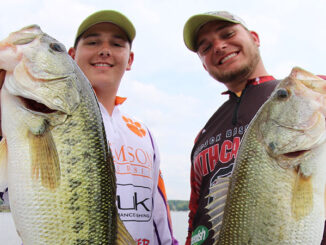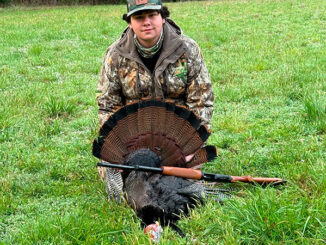
Fishing success often depends on being patient. You put your lines out, wait — and hope for a bite. But not when fishing the spring hybrid/striper feeding frenzy on Lake Hartwell.
“You have a small window to catch these fish,” said guide Chip Hamilton. “We put the boat in a couple of hours before daylight, and it’s over at good daylight. If the fish are there, you will know it in a few minutes.”
In fact, Hamilton said, it is so automatic that he has developed a formula to determine if he has picked a good spot to fish.
“We bait the first rod and cast it out, and by the time we bait the fourth rod and cast it out and lean back against the console, if we don’t have a bite, that is not good,” he said. “I call it the ‘cigarette rule.’ Once the fourth rod is out, I tell my party to go ahead and light up a cigarette if they smoke. If we don’t have a fish on by the time they finish the cigarette, we are moving.”
If he has picked a good spot that morning, Hamilton said, once the egg sinkers on the Carolina rigs hit the water, they will have a fish on.
“Half the time, you don’t get the fourth rod out before you are netting the first fish,” he said.
It can be so automatic that if Hamilton has had repeated success on a particular point, he will have his fishing party hold their rods while he baits them, then he quickly casts them out without having to stop and put a bait on in between.
“If I feel that strong about a place, I want to have everyone ready before I cast the first rod out. It can be fast and furious,” he said.
But sometimes, he said, after that first fish or two, the bite might slow down or stop for whatever reason.
“If we sit there for 15 minutes and don’t get another bite, I reel in and leave. I know that on that particular pattern, I should be steady catching fish,” he said. “You can’t waste time being patient. If they are there, they are going to eat. If not, you have to move.”


